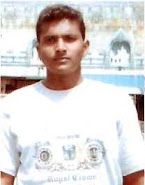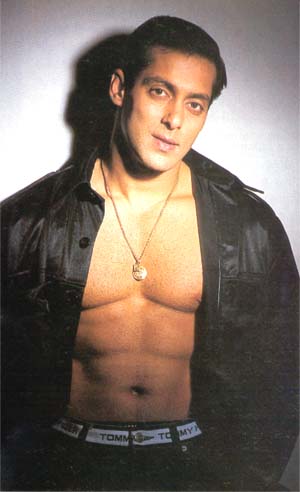
(The following is an excerpt from The History of Independent Cinema by Film Threat's contributing editor Phil Hall, published by BearManor Media.)
The first motion pictures were documentaries – or, by the very least, documents of everyday life in the late 1890s. In France, the Lumiere Brothers captured scenes of steam-driven trains and well-dressed boulevard pedestrians. In America, Thomas Edison brought the celebrities of the day into his New Jersey studio – Annie Oakley displayed her sharp-shooting, Eugen Sandow displayed his muscles, and so forth. These little films rarely lasted longer than a minute or two, since the early cameras were unable to accommodate large magazines of film.
But as the film technology advanced, audiences quickly became bored of watching brief scenes of their society. After all, what was the point of paying to see a movie (in this case, one without sound or color) when you could go outside and see the same thing for free (with sound and color)? Thus, the concept of writing a screenplay and directing actors for the camera took root and movies turned into an entertainment medium.
However, the early filmmakers never entirely abandoned non-fiction films. Cameras began going far afield to capture the more unusual and dramatic aspects of real life. Cameramen began showing up at newsworthy events, documenting the presence of various dignitaries and celebrities as they engaged in speeches, meet-and-greets and other photo opportunities. Theodore Roosevelt, who became president in 1901, was a ubiquitous figure for the newsreels (as this genre became known). Even without a sound recording or color film, Roosevelt’s animated body language and larger-than-life enthusiasm for pontificating made him a natural for the camera.
From its beginnings, however, non-fiction film was being used to show a distinctive agenda – reality could easily be manipulated and audiences would not be the wiser.
The first known manipulation of the genre came in 1903, when Thomas Edison used the planned euthanasia of Topsy, a violence-prone circus elephant, as a means to promote the DC electric current. Edison schemed with the owners of the elephant to have the animal electrocuted with AC current electricity, which was being promoted by Edison’s rival Nicola Tesla. The thought behind this notion was fairly devious: by showing how dangerous AC current electricity was, it would scare people into using the perceived safety of DC current (and, in the process, scare profits to Edison and away from Tesla).
The fact that Topsy was a severely abused elephant who only lashed out at brutish trainers (including one who tried to force her to consume a burning cigarette) was never mentioned in the Edison’s brief film, which was released under the title “Electrocuting an Elephant.” Instead, Topsy is shown being led to an area in an open field where her legs are imprisoned in chains and wires. Her human handlers quickly disperse, and within seconds smoke begins to rise from the ground. Topsy collapses into a dead faint amidst a rising cloud of electrified smoke.
Whether “Electrocuting an Elephant” was specifically responsible for the later decline of Tesla’s fortunes is open to debate (it clearly didn’t help). But what Edison achieved, perhaps accidentally, was the blurring of real life with reel life. The audiences in 1903 had no clue about the circumstances behind the production of “Electrocuting an Elephant.” They assumed they were watching a newsreel – it wasn’t until many years later that the truth of the film’s production emerged. However, the concept of a manipulated non-fiction film became locked into the filmmaking bag of tricks.
In a way, this was actually not a bad thing. Documentary filmmaking would not have emerged beyond newsreel glimpses of history makers and travelogue shots of scenic locations had filmmakers not attempted to slice and dice reality to fit their particular vision. Two filmmakers, both working (somewhat ironically) among the indigenous peoples of North America, laid the foundation for modern documentary productions – if only by creating their own distinctive concept of what life should be like.
The first filmmaker was Edward S. Curtis, who gained famed in the late 19th and early 20th centuries for his photographic portraits and phonographic recordings of the American Indian tribes in the United States and Canada. In 1914, Curtis set out to create a film focusing on the culture and customs of the Kwakiutl tribe in British Columbia. But Curtis did not attempt to create a filmed record of Kwakiutl life. Instead, he created a somewhat hoary tale of love and revenge in a period before white society intruded on tribal life. Interspersed throughout the film were shots of tribal dances and traditional warrior costumes.
Despite the provocative title “In the Land of the Head Hunters,” Curtis’ film was a fairly tame affair. Perhaps it was a little too tame for 1914 audiences, who had little enthusiasm for the appreciation of American Indian cultures. Curtis spent $20,000 of his own money to make the film, but it was a commercial flop. Ten years later, he sold the negative and master print of his production to New York’s American Museum of Natural History for a mere $1,500.
Curtis has no role of further significance to independent film – or to the film industry as a whole, for that matter. His last connection with the big screen came in 1923 as an uncredited assistant cameraman to Cecil B. DeMille on “The Ten Commandments.” His one motion picture, “In the Land of the Head Hunters,” was forgotten for many years. However, it was rediscovered in 1972, 20 years after Curtis’ death, and was restored and retitled with the less scintillating title “In the Land of the War Canoes.” Today, it is considered a classic of ethnographic film studies.
Eight years after Curtis’ “In the Land of the Head Hunters” premiered, another feature-length portrait of North America’s indigenous people came to the screen. Unlike the Curtis production, this film had a significant impact on both the motion picture industry and the audiences that supported it. The production was “Nanook of the North,” made by a novice filmmaker named Robert Flaherty, and it is often regarded as the first documentary feature ever produced.
“Nanook of the North” is the story on an Inuit hunter in the Canadian Arctic (at the time, the Inuit people were referred to as Eskimos – we’ll use the word “Inuit” to describe this film). Nanook supports his family as a walrus hunter, and he is adept at fishing, building igloos and surviving in the harsh extreme weather of the frozen north. In the course of the film, Flaherty follows Nanook as he uses spears to hunt his prey. In the film’s exciting climax, Nanook and his family work furiously to build an igloo in the face of an approaching storm.
It was all quite compelling to watch back in 1922, when most Americans had little knowledge of Inuit customs and practices. Even today, “Nanook of the North” is an invigorating cinematic experience, particularly the stunning climax in the race against the elements.
There was just one problem: it was all a fake. There was no Nanook – the Inuit subject was actually named Allakariallak. “Nanook” comes from the Inuit mythology meaning “master of the bears.” The woman who was allegedly Mrs. Nanook wasn’t the hunter’s wife – she was a local Inuit woman recruited by Flaherty for the film. Nanook’s use of spears for hunting walrus was a practice that vanished 19th century – the real Inuit hunters used guns, but Flaherty asked them to dust off the old spears for his camera. Nanook’s igloo was also a fake – Flaherty’s camera could not get adequate lighting in a real igloo, so a phony half-igloo was built to provide an understanding of the interior design for that icy residence.
Even the climactic race to build an igloo was phony. Flaherty shot the sequence well within distance of Inuit encampments, so the subjects of his film could’ve easily found shelter from the storm without having to build an igloo.
Of course, no one watching “Nanook of the North” back in 1922 was aware of this chicanery. Indeed, the film’s unusual approach to capturing the daily struggle of a distant culture caught everyone by surprise – particularly the booker at New York’s celebrated Roxy Theatre, which gave the movie its premiere by putting it on a double bill with Harold Lloyd’s popular comedy “Grandma’s Boy.” Flaherty was initially unable to secure a distributor and self-booked his film. Apparently, it was booked at the Roxy by default – no dramatic film was available and it was considered a bad idea to buttress the Lloyd hit on the double bill with another comedy.
For Flaherty, “Nanook of the North” was a personal vindication – he had lived in the Arctic for nearly a decade and twice attempted to create a film about the Inuit people. On both occasions, his footage was destroyed in accidents, requiring that he start work from scratch. For “Nanook of the North,” Flaherty had money – he was financed with a $50,000 budget by the French fur company Revillon Freres – and time on his side – the film was shot from August 1920 through August 1921. But despite these conditions, Flaherty insisted it was necessary to re-enact and re-invent situations to dramatize Inuit life. Apparently, a genuine filmed record of daily Inuit life might be as monotonous as a genuine filmed record of daily Western life.
“Nanook of the North” was a monster hit. Pathe Exchange picked up the worldwide distribution after its New York success and the film was heralded around the world. Sadly, Allakariallak never shared in the film’s glory. Months after the filming was completed, a genuine tragedy struck: Allakariallak was stranded in the Arctic during a hunt and starved to death in his chilly isolation.
However, lightning never truly struck twice with Flaherty. His career lasted another two decades, but his output was spotty and his grasp on the non-fiction genre grew increasingly shakier with each new film. His follow-up to “Nanook of the North” was the Paramount Pictures-commissioned “Moana,” which was shot in Samoa in 1923 and 1924. But the production was riddled with disasters from start to finish. Flaherty arrived in Samoa without a story and took months to find an angle that would appeal to the notion of documenting exotic indigenous people for Western audiences. But the delays in production agitated Paramount Pictures, which kept wiring Flaherty demanding to see footage. Flaherty repeatedly had to explain that missionaries had Westernized the Samoan people to the point that many of the customs that people associated with the island had vanished (a tattoo ceremony featured in the film, for example, had to be reconstructed from historic texts since it had not been performed in many years).
Even more distressing was an experimental color film camera that Flaherty was given for the Samoan location photography – it malfunctioned and none of the footage could be salvaged. However, Flaherty’s use of panchromatic film stock created a deeply beautiful black-and-white experience, as opposed to the flat orthochromatic stock which was standard for the era.
As with “Nanook of the North,” audiences watching “Moana” were unaware that Flaherty was staging scenes for the camera. Even the usually astute Mourdant Hall, film critic for the New York Times, noted: “Not only is Mr. Flaherty to be congratulated on what he has put into this film, but he deserves a great deal of praise for having kept it free from sham.”
Unfortunately for Flaherty, “Moana” was as much of a box office bust as “Nanook of the North” was a success. The film is remembered today only because it inspired writer-turned-filmmaker John Grierson to create the word “documentary” to identify the non-fiction genre.
For Flaherty, “Moana” was the beginning and the end of his Hollywood career. He was signed for two additional South Pacific-based features, MGM’s “White Sails of the South Seas” and the F.W. Murnau production of “Tabu,” which he was supposed to co-direct, but he severed his relations with both films prior to the start of production. Other studio-based projects never materialized, and by the early 1930s Flaherty was unable to secure work in America. He went overseas, where he created the memorable features “Man of Aran” in 1934 and “Elephant Boy” in 1937. “Man of Aran,” although presented as a documentary on Irish fishermen, also included blatantly staged sequences (although it was also beautifully photographed). “Elephant Boy,” co-directed with Zoltan Korda, didn’t pretend to be a documentary. It was a fanciful adaptation of Rudyard Kipling’s “Toomai, of the Elephants” and offered a refreshingly engaging performance by the young Indian actor Sabu.
Flaherty wouldn’t make another U.S. film until 1941, when the Department of Agriculture commissioned him to create the documentary “The Land.” The film highlighted the ecological and economic damage created by the overproduction of cotton in what was known as the Dust Bowl. In many ways, it was the closest film Flaherty ever made to a genuine documentary. But the U.S. entry into World War II doomed the project – by the time “The Land” was ready for release in 1942, it was barely distributed out of fear it would be disruptive to wartime morale.
Flaherty’s final original project, “Louisiana Story” (1948) was offered as a documentary and is still viewed by many film scholars as such, but it was actually an industrial film using nonprofessional actors and a screenplay. It will be discussed at greater depth in the chapter of this book relating to that genre.
Flaherty has been credited as both director or co-director of the 1950 documentary “The Titan: Story of Michelangelo,” which won the Academy Award as Best Documentary. However, this was actually a 1940 film made by German director Curt Oertel. Flaherty re-edited Oertel’s footage and scripted an English-language narration for an American release of the film, but he played no role in its creation and did not deserve directing credit.
Flaherty’s contribution to non-fiction cinema is problematic. Yes, “Nanook of the North” showed that documentary feature films could be accessible to mainstream audiences and commercially viable for producers and distributors. As a pioneer in putting documentaries on equal footing with narrative features, he deserves credit.
Yet Flaherty’s output is spotty and troubling. He made relatively few films, and except for “The Land” he seemed incapable of keeping fiction out of non-fiction filmmaking. Flaherty set a dangerous precedent that still permeates the genre – ignoring real life in favor of a glamorized and exotic reel life. Audiences are still being bamboozled by this artifice.
Let’s backtrack to the 1920s and the aftermath of “Nanook of the North.” Flaherty was not alone in believing there would be an interest in non-fiction filmmaking. In other parts of the world, American filmmakers were lugging their cameras in search of a great story.
The most dramatic of these productions came from the combined talents of the adventurers Merian C. Cooper and Ernest Schoesdack, who were in Ethiopia at the time Flaherty was finishing up work on his film. Cooper and Schoesdack shot footage of the imperial court of Haile Selassie, but the footage was destroyed in a fire before it was developed. Despite that loss, Cooper and Schoesdack set a new direction to Persia (today’s Iran) to document the migration of the nomadic Bakhtiari people. They linked up with journalist and former World War I spy Marguerite Harrison, who financed their expedition on the condition that she share directing credit and appear on camera. The team shot 40,000 feet of footage that was edited into a two-hour film known as “Grass.”
As with Flaherty’s landmark, “Grass” found its audience by accident – in this case, Cooper was screening it on the professional lecture circuit when Paramount chief Jesse L. Lasky made an unexpected offer to distribute the film theatrically. “Grass” opened in New York in February 1925 to critical acclaim and modest commercial success.
But unlike “Nanook of the North,” “Grass” did not recreate entire incidents strictly for the camera. Cooper, Schoesdack and Harrison were part of the 50,000-person Bakhtiari odyssey across the Karun River and up Zard Kuh, the highest peak in the Zagros Mountains. Although the film’s pacing may seem sluggish by contemporary standards, it nonetheless serves as an invaluable record of Middle Eastern culture.
Lasky was buoyed by the commercial reaction to “Grass” to finance Cooper and Schoesdack’s next film (Harrison had no further partnership with the duo). Unfortunately, the follow-up film “Chang” (1927) was not a non-fiction film but rather a Flaherty-style docudrama that mixed aspects of an exotic culture (in this case, the farmers of rural Siam, today’s Thailand) into a patently staged story regarding the threat of tigers and elephants to a farming village.
But unlike “Nanook of the North” or “Moana,” there was no attempt to pretend this was a documentary. The promotional material for the film defined it as “a melodrama with man, the jungle, and wild animals as its cast.”
After “Chang,” Cooper and Schoesdack stayed away from non-fiction filmmaking. Documentary filmmaking’s loss was Hollywood’s gain, as the duo went on to create the 1933 masterpiece “King Kong.”
During the 1920s, Kansas-born adventurers Martin and Osa Johnson were also shooting films in far corners of the globe. The Johnsons were actually ahead of Flaherty in regard to releasing their Pacific-based features “Jungle Adventures” (1921) and “Headhunters of the South Seas” (1922), but the films were viewed as travelogues and not as artistically challenging true-life narratives. In 1923, the Johnsons offered “Trailing Wild African Animals” (1923), a record of their 1921-22 African expedition.
In the 1920s and the 1930s, the Johnsons produced several feature-length films detailing their African trips. By 1930, these silent films were compiled into “Across the World with Mr. and Mrs. Johnson,” which included a narration by Martin Johnson. Genuine sound recording in the Johnson’s films didn’t take place until 1932’s “Congorilla,” which was noteworthy for taking sound technology on location to Africa.
Time has not been kind to the Johnsons’ films, which are barely recalled today. Their self-promoting tendencies, coupled with their badly dated view of African cultures and the continent’s ecosystem, make their films painful to watch. In their time, however, the films enjoyed a mild popularity and their footage was often recycled by low-budget films set in the so-called “dark continent.”
By the 1930s, audiences began to tire of documentaries of distant exotic cultures. Some filmmakers tried to keep the genre alive, most notably the Marquis Henry de la Falaise de la Coudraye, an aristocrat whose Hollywood star wife Constance Bennett provided financial backing for his Borneo-based documentaries “Legong” (1935) and the Vietnamese-based “Kiliou, The Killer” (1937). These films were unusual since they were shot in two-strip Technicolor, but that novelty wore off when the superior three-strip Technicolor process took dominance in the late 1930s (“Kiliou, The Killer” only survives as a black-and-white print). However, due to the difficult of lugging sound recording equipment abroad, both films were shot as silents and released with synchronized musical scores – an anachronism for the mid-1930s.
Separate and apart from this travelogue approach were Margaret Mead and Gregory Bateson, who took an anthropological approach to filming the lives and culture of the Balinese people. Mead and Bateson spent the mid-to-late 1930s working in Bali, but their footage was not seen until the early 1950s when the released a series of six short documentaries, most notably “Karba’s First Years,” “Bathing Babies in Three Cultures” (which included footage shot in New Guinea) and “Trance and Dance in Bali.” These films are primarily known to most moviegoers by reputation, since they are rarely screened today.
But changing tastes and changing times warranted a new outlook. As the Great Depression reshaped America, audiences were less than enchanted with tantalizing glimpses of far-away lands. Problems at home demanded attention, and a new wave of documentary filmmakers fixed their cameras on American socio-economic issues.







































